here are the tasks I will do in today's lessons:
1. finish the IDAF Dossier [done]
2. Contact Newspaper [done]
3. Write my intro to our project [in progress]
These are my goals for today:
- Fill out the forms ✔️
- Prepare E-Mails and write to newspaper (NaG, Watson …)✔️
- Clean up my account on the horse✔️
To-Do-List
- Write an article for "Züri-Oberländer" (IDAF)
- Contact more Media-Outlets
Our highest priority for today's lessons is writing and perfecting the article for the newspaper "Züri-Oberländer". After completing the article, we would like to send it to Ms. Mittelholzer for correction and feedback.
So far we have conducted our interview with an expert and have also had a successful visit to the kindergarten. (See other "Green Roofs" posts). We have additionally completed the IDAF-Worksheets.
I have already sent out a lot of E-Mails, so I now need to work on the article. There is already a first draft, but I would like to include the interview into the article. As soon as this is done, I would be ready to start the process of publication.
-Finish article
-Possible corrections
-Start intro WordPress
-Storyboard podcast
-Team assesment
We have received a reply from Zürcher Oberländer that we can send them a draft that is max. 2500 characters with high quality pictures. Our next step is to write the article and send it to them as soon as possible!
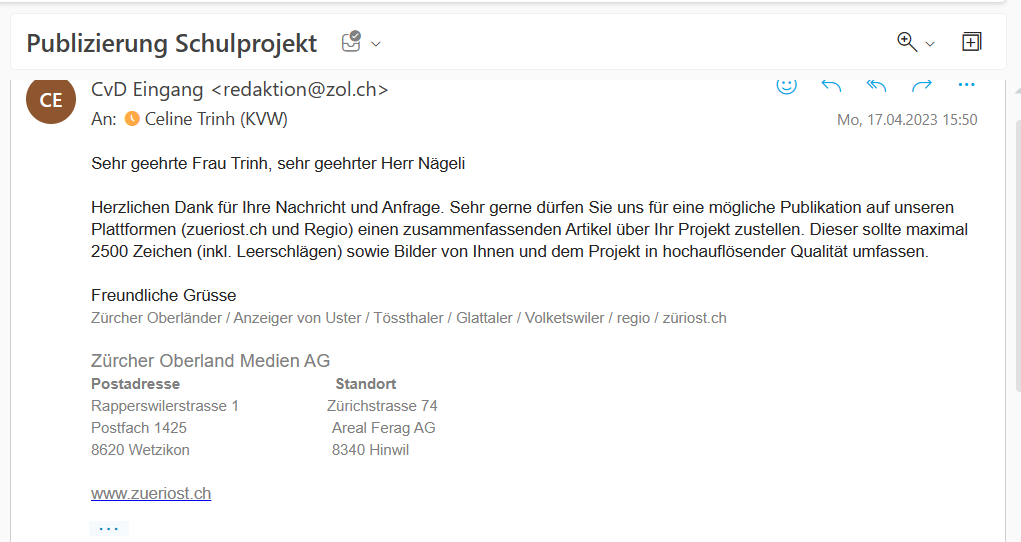
We replied to them and sent them the article and picture:
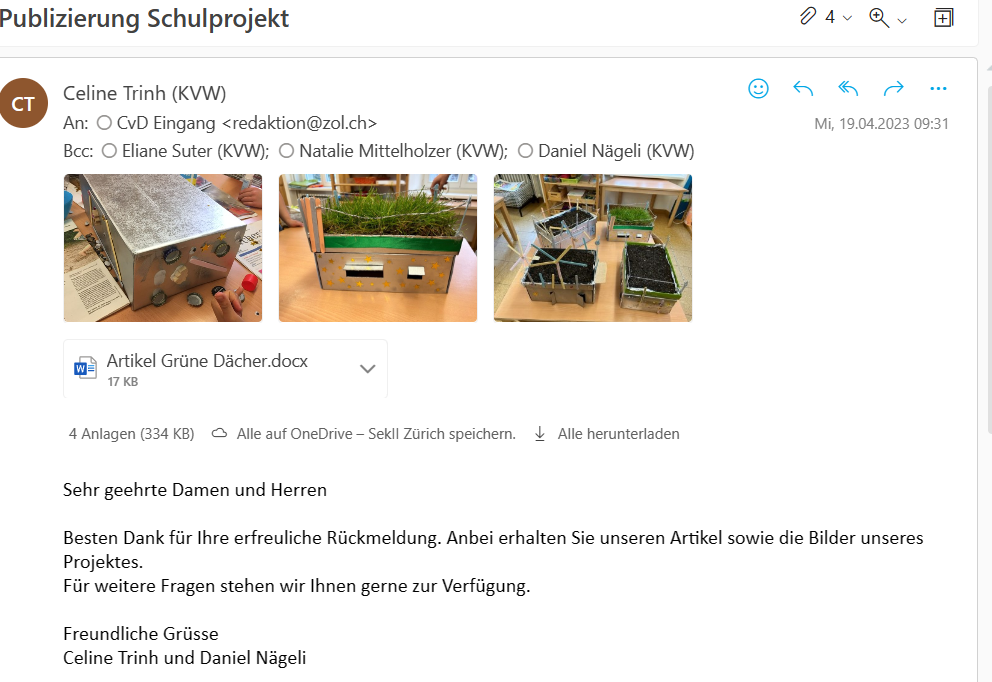
Via: Whatsapp Videochat, 11.04.2023
-Wann warst du bei den Penan in Borneo?
Ich war bei den Panan in den Jahren 2001, 2003, 2007 und 2011. Das erste Mal als wir uns auf die Suche von Bruno Manser machten.
-Wie kamst du dazu mit den Penan zu interagieren?
Interagiert habe ich vermehrt leider nur mit dem Dolmetscher. Er war ein Halb-Penan und er übersetzte von Malay, die Sprache der Penan, ins Englische. Die Penan selbst sprechen kein Englisch.
-Wie hat die Modernisierung den Lebensstil der Penan verändert?
Es leben noch einige wenige Hunderte Penan wirklich als Nomaden, diese befinden sich in den oberen Regionen. Bei diesen hat sich nicht viel verändert. Im flacheren Teil wird halt leider stark abgeholzt. Aus diesem Grund ist es nicht mehr wirklich möglich dort so zu leben. Sie kriegen von der Regierung Baracken und leben zur Hälfe in diesen und zur anderen Hälfte im Dschungel. Also einfach gesagt wurde der Grossteil der Penan indirekt dazu gezwungen ihr nomadisches Leben aufzugeben. Leider hat dies nur sehr selten Vorteile für die Penan, da viele von ihnen in Dörfern oder Städten verelenden.
More...
List of contacted Webpages:
-Bruno Manser Fonds: No BCC, because contacted over webpageform (Added as soon as possible)
-Nikin: Sent confirmation over E-Mail
-Swissinfo.ch: No BCC, because contacted over webpageform (Added as soon as possible)
-indojunkie.com: Added to BCC
-survivalinternational.de: Added to BCC
-Geo/Geolino: Added to BCC
-Naturfreunde Schweiz: Added to BCC
-Schweizer Familie: Added to BCC
-Zürcher Oberländer: No BCC, because contacted over webpageform (Added as soon as possible)
-NZZ: No BCC, because contacted over webpageform (Added as soon as possible)
More...
As planned, I spoke with my friends about creating a podcast episode. They both said they would love to, and I hope we will be able to produce an episode on Friday the 21.04.2023. The podcast is called Lo-cast, and they produce episodes about many different subjects. Even thought they have a small audience, they have a few listeners which regularly turn on the podcast.
Delvina and I are on the search of a Newsletter or Blog that we could publicate our IDAf Project on. On our first request to the GMX Newsletter we sadly got a rejection.
GMX Newsletter Response:

Because of this rejection we sent out another request to the blog : Umweltgedanken.de
We are still awaiting their response and hope for the best.
Kind regards
Delvina & Sandra
As planned, we visited the kindergarten last Tuesday the 11th April 2023. Our goal of the visit was to teach the children about green roofs and what they do for environment.
The kindergarten is located in Gibswil and upon arrival the teacher helped us to set up everything. Soon after the children arrived, Leon gave them a short introduction of our project. To make it more understandable for the children he used questions such as "Who has a garden? What kind of plants do you grow in your garden? Have you ever imagined your garden being on top of your roof?"
The children were really excited and told us about their garden and what kind of vegetables, flowers or other plants they are growing together with their parents.
We also brought along our own miniature green roof that we had built in advance so that the children could visualize it better.
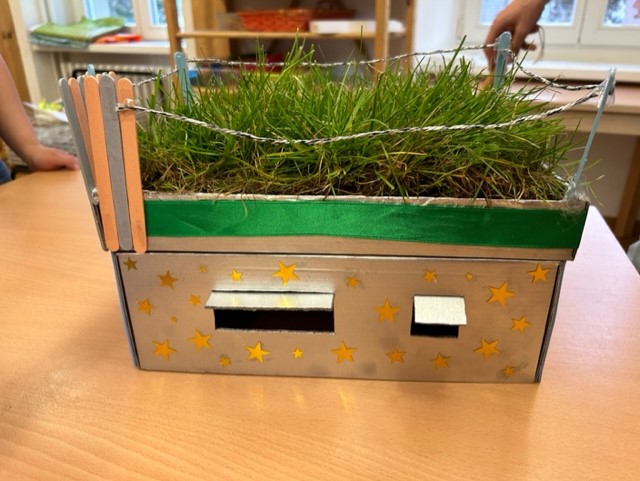
Afterward we split the 12 children into groups of three and started working on the miniature green roof. Some were more excited than others, but in general almost all of them liked the idea of decorating their own "house" and getting their hands dirty while planting the seeds for the green roof.
Here are some pictures of the children decorating the shoebox and planting the seeds:
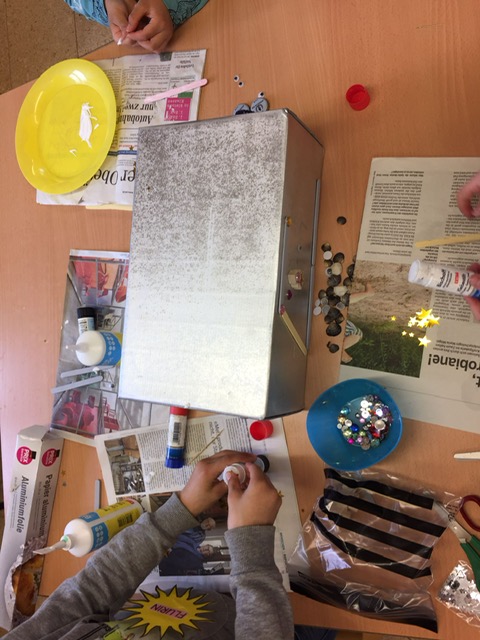
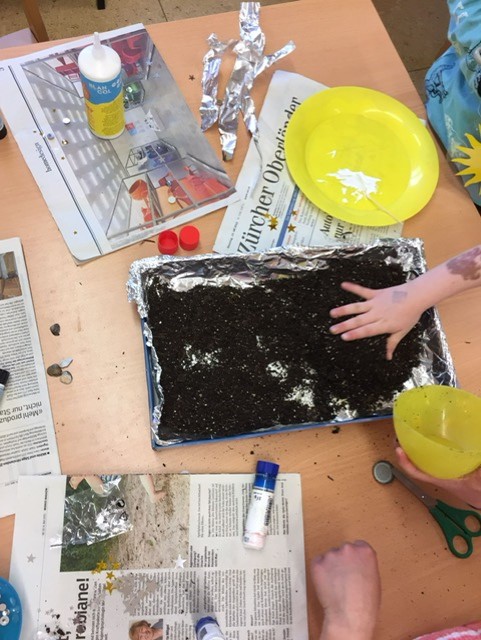
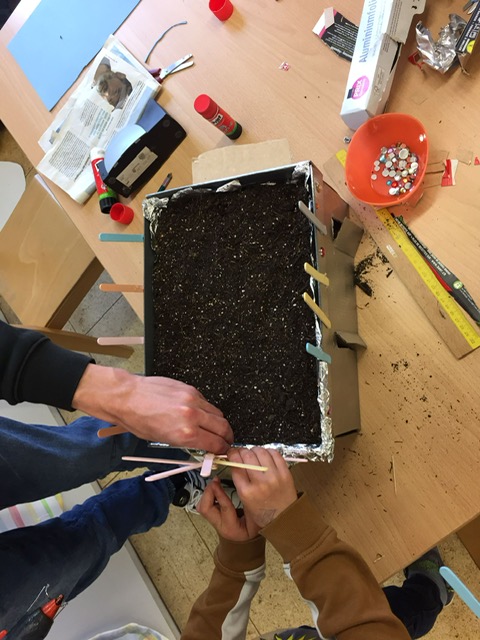
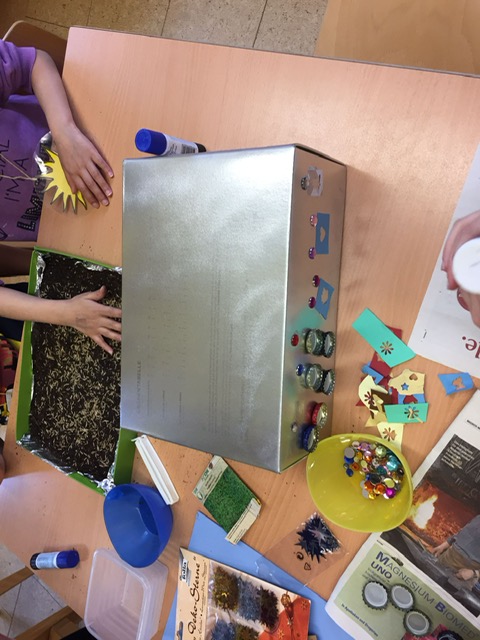
We spent approximately two hours at the kindergarten and the children really enjoyed this experience. They were all really enthusiastic and couldn't wait for the seeds to grow. In total, we built three miniature green roofs with the children. Over all, it was a memorable and educational experience for us.
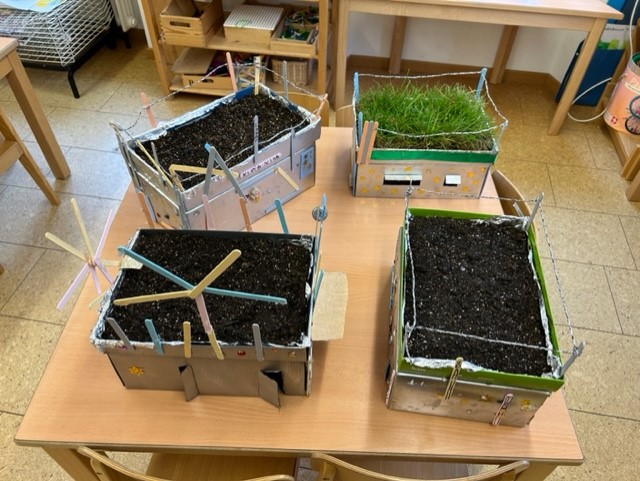
As there have been some developments with my collaborators, I would like to provide a brief update.
- The meeting with the wastewater treatment team from Rüti went smoothly, and I have an audio recording to transcribe the discussions.
- I have also managed to secure Ms. Alexandra Kappeler as a collaboration partner. She is an expert in wastewater management both domestically and internationally. She is currently in Ethiopia this week, but I will try to contact her next week to finalize the details.
I am happy that this has worked out, as it will give me the opportunity to gain insights into wastewater management practices in another country.